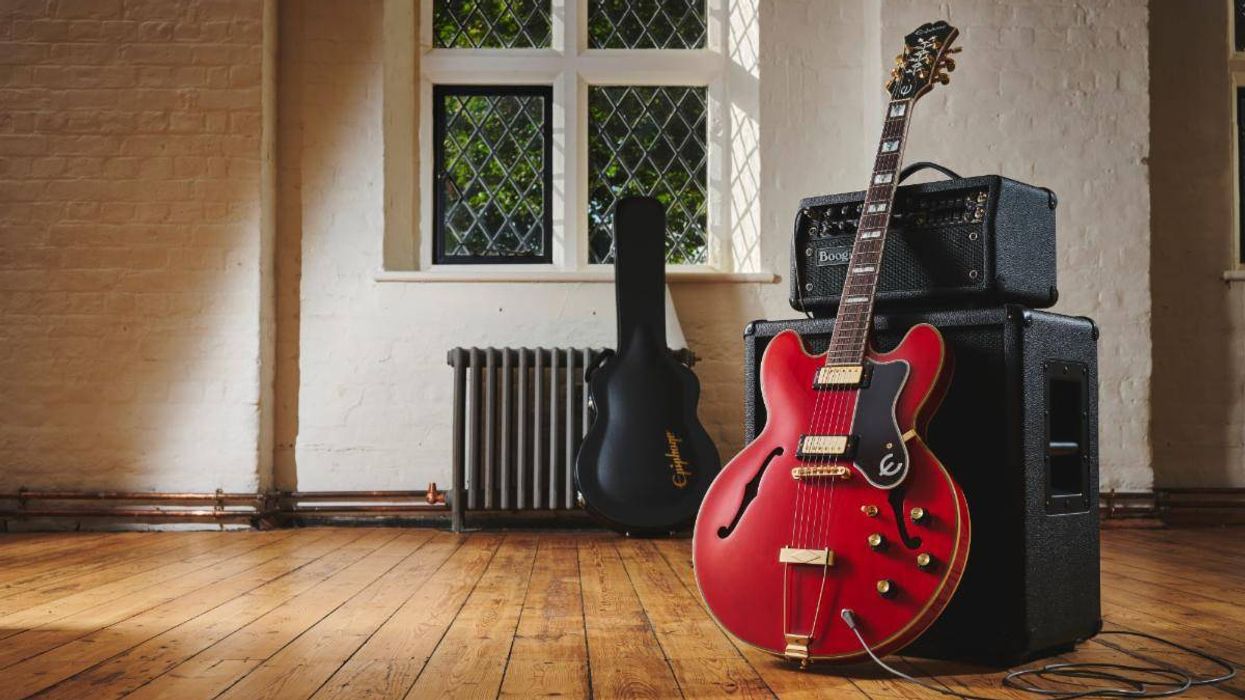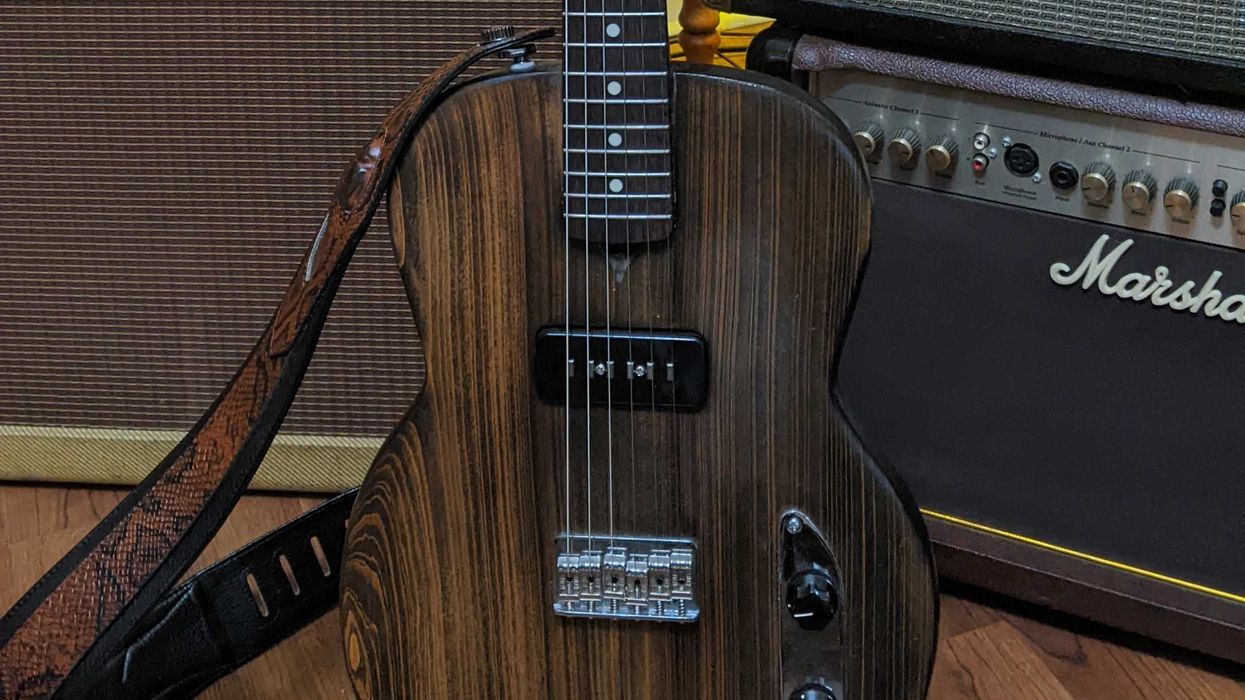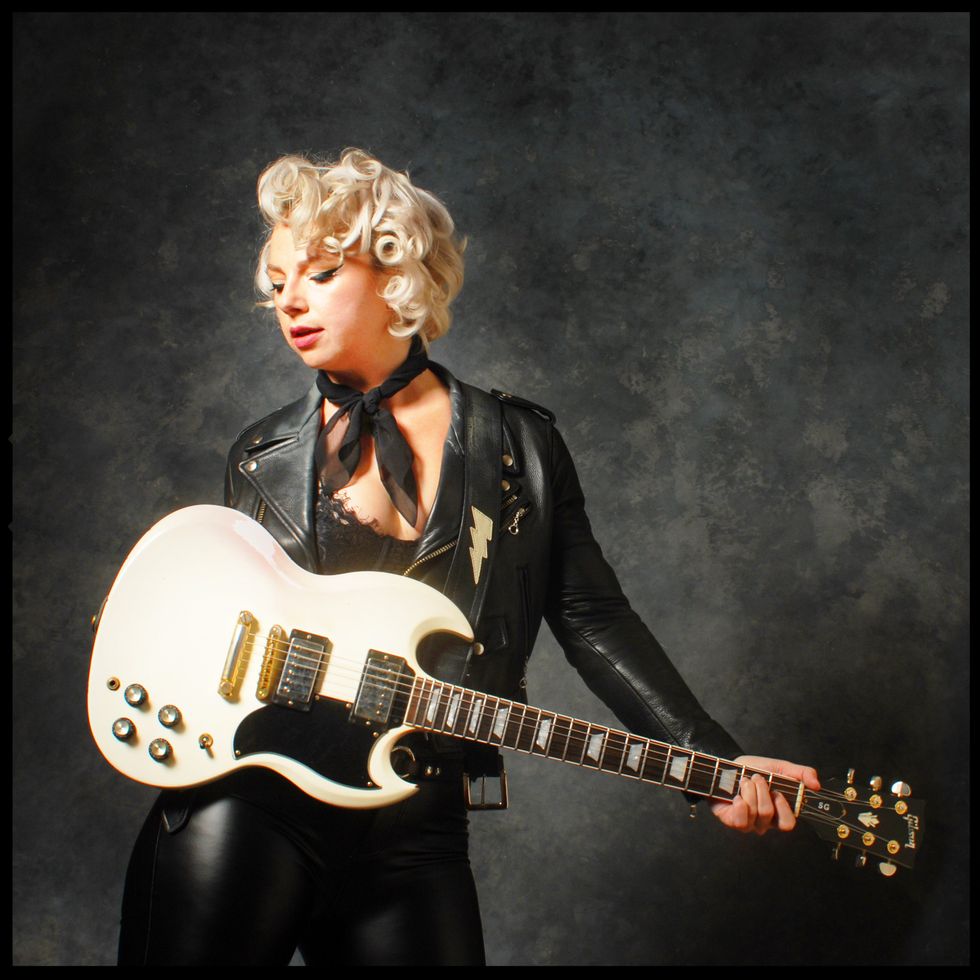One of the first musical forms nearly all musicians
learn is the standard 12-bar blues. You
can go nearly anywhere in the world, call off
a blues in the key of G and be able to have
a (hopefully) musical conversation. To make
the musical conversation more interesting to
both the listener and the player, you need to
understand the idea of developing tension
and how to resolve it.
I view this as a series of musical peaks and
valleys, with the peaks being the tensest
sounds and the valleys acting as the “ahh”
moment that resolves the tension. In technical
terms, this usually means a V-I cadence
where the V chord creates the tension
(or the peak) and the I chord (the valley)
resolves the tension. There are several key
areas of this form, and we’re going to examine
them and look for ways to make them
more interesting.
Them Changes
When it comes to the chord changes in
the 12-bar blues form, there seem to be
two approaches. The first is the more common
blues/rock approach—think Stevie Ray
Vaughan or Eric Clapton—where the changes
follow the traditional format and only use
the I, IV, and V chords of the key. On the
other side of the spectrum are the more jazz-influenced
forms, which began to develop at
the same time as bebop. In these alternative
structures, musicians became more adventurous
with how they played over the harmony.
They also began embellishing chords with
extensions and inserting additional ii-V progressions
into the 12-bar blues.
The changes shown in Fig. 1 lean more toward
the “jazzier” end of the spectrum. Let’s take
a moment to highlight some of the harmonic
landmarks you want to keep an eye out for. Download Example Audio...
During the first four-measure phrase, we
have what is known as a “quick change” in
bar 2. This is where we go to the IV chord (in
this case F7) to break up the monotony of
having the whole first phrase hover around
the tonic chord. Now, if we look strictly at
root movement, this creates a V–I sound
going from the C7 in the first measure to
the F7 in the second. Don’t be afraid to get
some tension going right off the bat and
then resolving it over the F7.
In the second phrase (measures 5 through 8),
we have an interesting chord pop up in the
eighth measure, an A7#9. This chord has two
functions: The first is to create another place
where you can cause more musical havoc—I
mean tension—and the second is to set up
the turnaround in the next phrase. Altered
chords can be a great and useful tool, but
are also easy to overuse. I like to think that
altered chords are really expensive, and
need to have their own space. Again this
sets up a cool V–I movement leading into
the first chord of the turnaround, Dm7.
The Homestretch
There are nearly as many ways to play a
turnaround in a blues progression as there
are notes in an Yngwie solo. For our example,
we are going with two tried-and-true
techniques, the ii–V–I and I–VI–ii–V–I progressions.
The first half of the third phrase is
a standard ii–V–I in the key of C, going from
Dm7 to G7 and then back to C7 on beat one
of measure 11. It’s worth noting that usually
the I chord is some form of a major chord—
as opposed to the dominant 7 we’re playing
here—but as long as the root movement is
correct (D–G–C), we can take some liberties
with the harmony. During the second half of
the phrase, we use a classic jazz turnaround
and cycle through I–VI–ii–V–I. Not only
does this give us tons of opportunity for
some interesting peaks and valleys, but the
increased harmonic rhythm tells the listener,
“Okay, once more, from the top!”
Once you get these chords under your fingers
and the sound in your ear, take some
time to listen to such players as Kenny
Burrell, Scott Henderson, Grant Green, and
Robben Ford. These guys are masters at
twisting blues forms and pushing the envelope
when it comes to blues.
Next month, we’ll dig into a cool new way
to use the same old pentatonic shapes we
know and love.
Jason Shadrick
PG Associate Editor Jason Shadrick has been mixing blues, jazz, and rock since he first picked up a guitar. Mostly because nobody told him not to. He has degrees in Music Business and Jazz Pedagogy, and previously worked with Lower Dyad Records and the National Guitar Workshop.




























